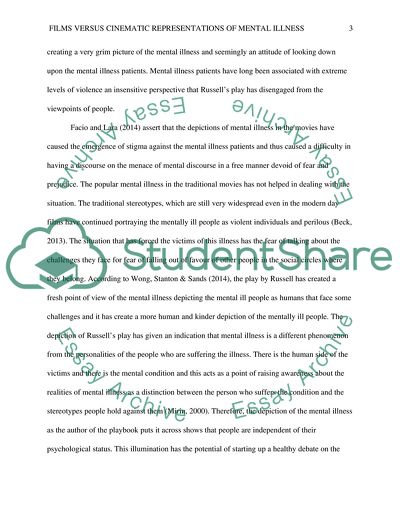Cite this document
(Films versus Cinematic Representations of Mental Illness Assignment - 8, n.d.)
Films versus Cinematic Representations of Mental Illness Assignment - 8. https://studentshare.org/health-sciences-medicine/1876448-essay
Films versus Cinematic Representations of Mental Illness Assignment - 8. https://studentshare.org/health-sciences-medicine/1876448-essay
(Films Versus Cinematic Representations of Mental Illness Assignment - 8)
Films Versus Cinematic Representations of Mental Illness Assignment - 8. https://studentshare.org/health-sciences-medicine/1876448-essay.
Films Versus Cinematic Representations of Mental Illness Assignment - 8. https://studentshare.org/health-sciences-medicine/1876448-essay.
“Films Versus Cinematic Representations of Mental Illness Assignment - 8”. https://studentshare.org/health-sciences-medicine/1876448-essay.


